 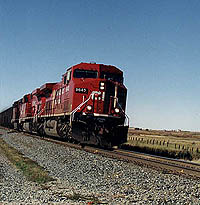 The C.P.R., under Mr. J. T. James, the Chief Engineer, started wending its way westward from Brandon in the summer of 1882. At that time the area around Caron was still relatively unexplored and the engineer was preceded by surveyors charged with locating the line. The surveyors were followed by the grading crews working with plows, scrapers and grading machines which elevated the dirt into the grade. The track laying crews were approximately 100 miles behind. They were laying track at the rate of 3.51 miles of permanent track a day. There were 2,640 ties, eight feet long, six inches thick with an 8 inch face, to the mile. The rails were steel and each one weighed 56 pounds to the yard and was 30 feet long. There was no ballast below the rails. Trains could travel along this line at 25 to 30 miles an hour. 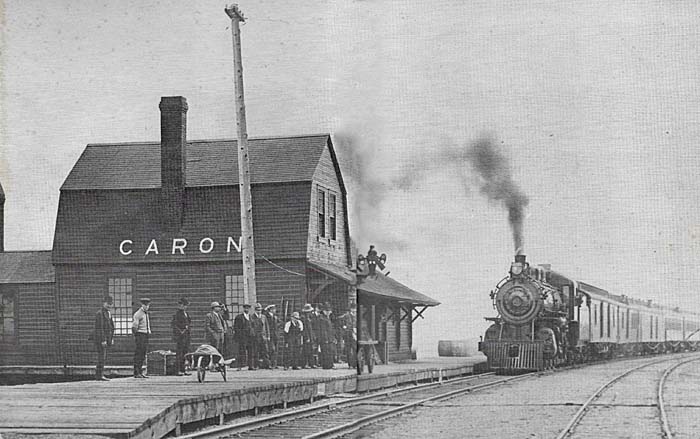 Beyond Caron the builders met a significant obstacle, the Missouri Coteau, which was described as "like minature mountains that fall into deep and abrupt valleys". Stations were located every 16 miles with passing places mid-way between them. One of the original stations was the one built at Parkbeg. At the turn of the century the CPR relocated the track a mile south of Parkbeg and the community was moved. At that time the Parkbeg station was split into two sections, loaded onto flat cars and moved to Caron. 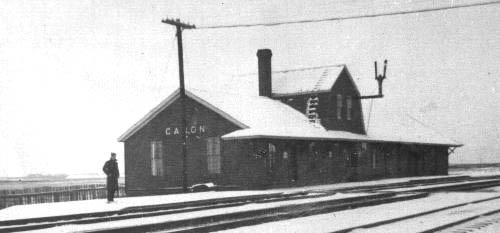 The relocation of the line was designed to eliminate a difficult section of the route, a steep grade just west of Caron. Hundreds of trains stalled on the grade. The light engines of the era struggled to lift their load out of the valley at this point. Sometimes they had to back up to Caron for another run at the grade, or wait for a pusher engine to come out from Moose Jaw to assist them. To lighten the load, the train crew would sometimes shovel off a half ton of coal which was gathered up by the homesteaders. The homesteaders repaid their railroad friends with hunting season hospitality. At the turn of the century, the CPR decided to reroute the mainline along Sandy Creek through the Besant Valley. A double track of heavier steel was laid to accommodate the larger engines and increasing traffic. It went into service in 1904 at the cost of half a million dollars. Work was started at Caron and in August they were working at Mortlach. In September of 1903, the grade was finished at Caron and they were laying ties and rails. By July 1904 it was reported that Parkbeg was busy as railroad construction was in full swing. The railroad was moved about one mile south at Parkbeg. The townsite was relocated leaving only the pumphouse and the school at the old site and causing many problems for the school. Sixty years of cultivation have not entirelv obliterated the old roadbed. It winds through wheat fields, pastures and farmyards, and although in some places it is only a very small hump across the land, it can still be seen. Paths, roads and fence lines cross it. 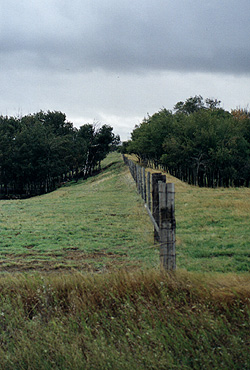 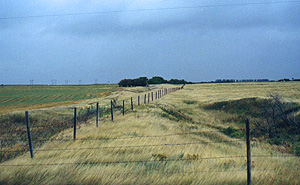  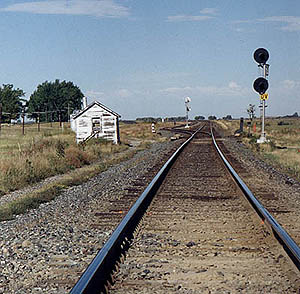 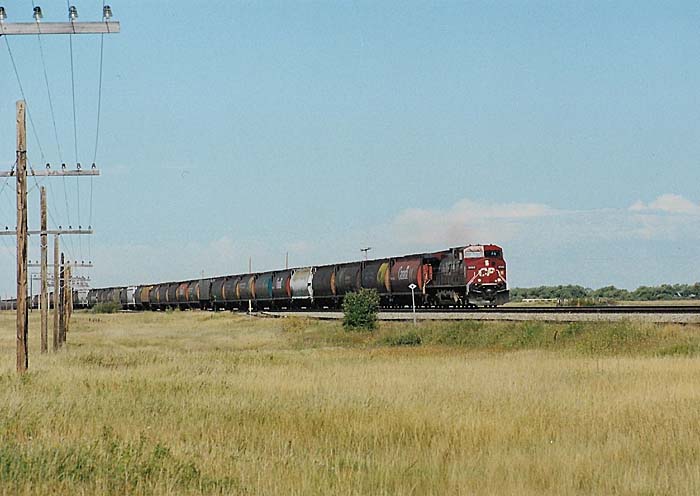   Return to Home Page |
